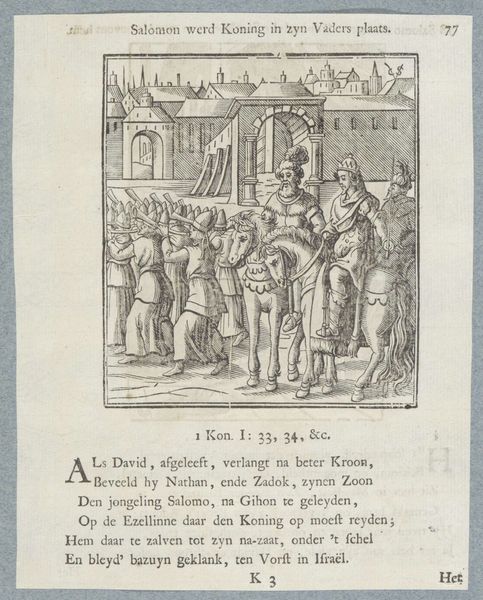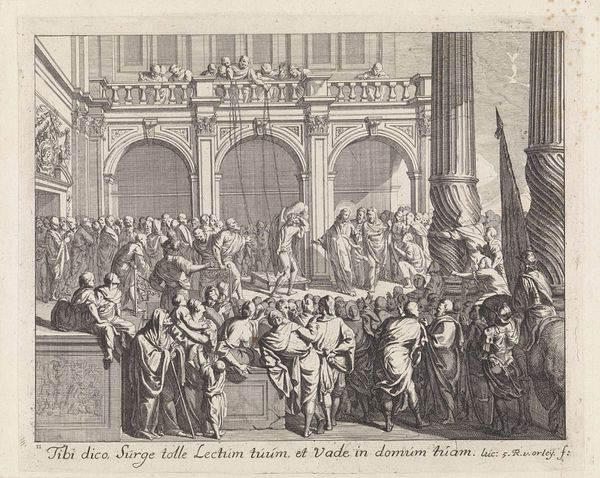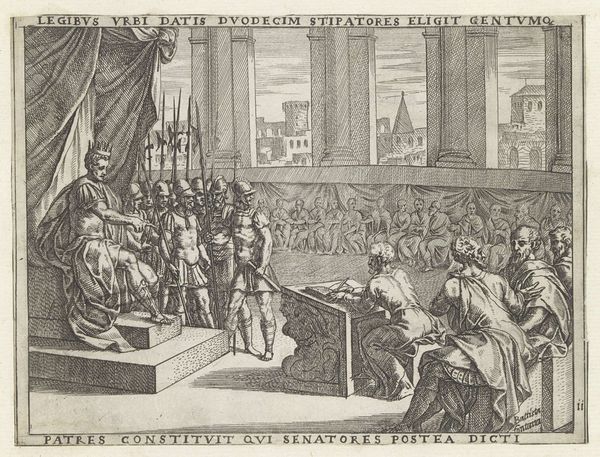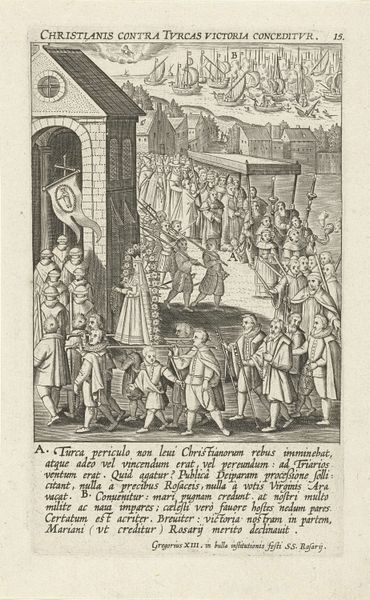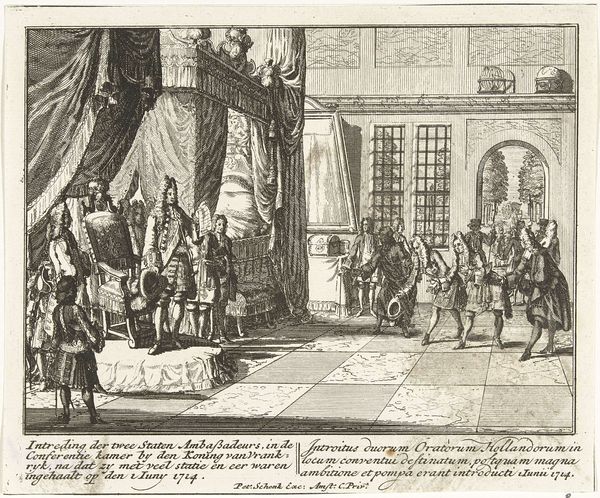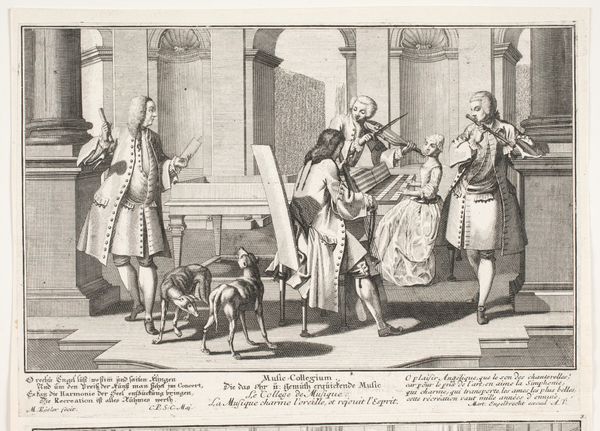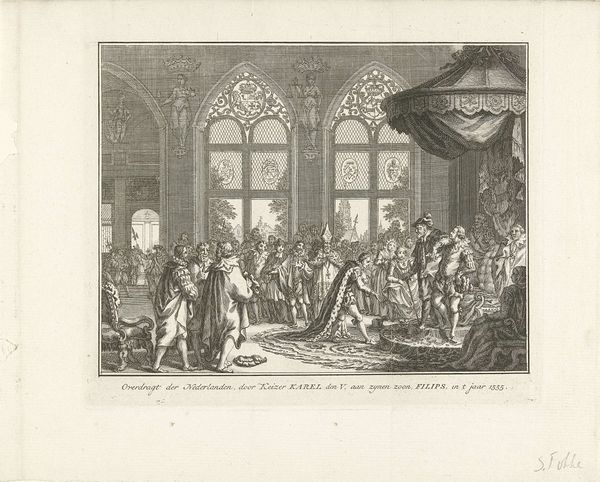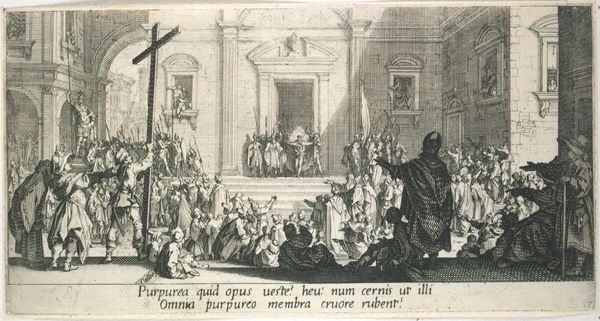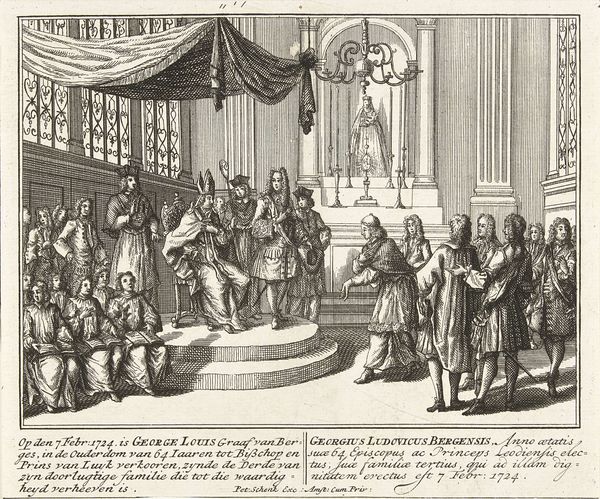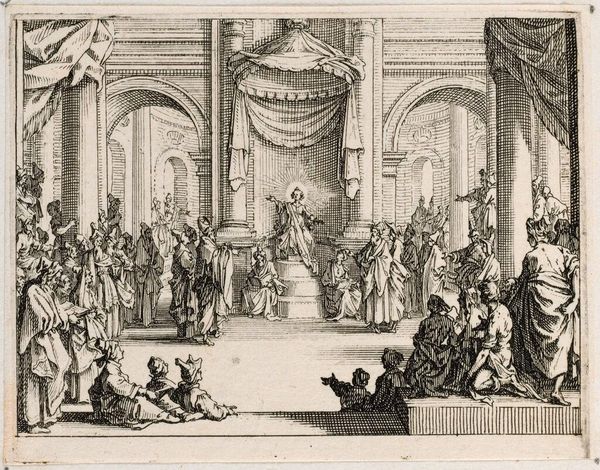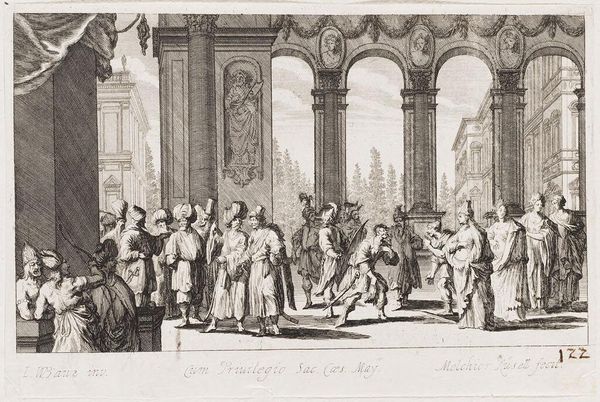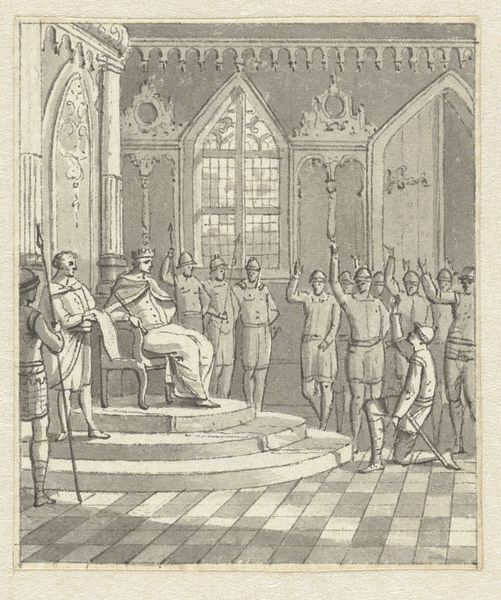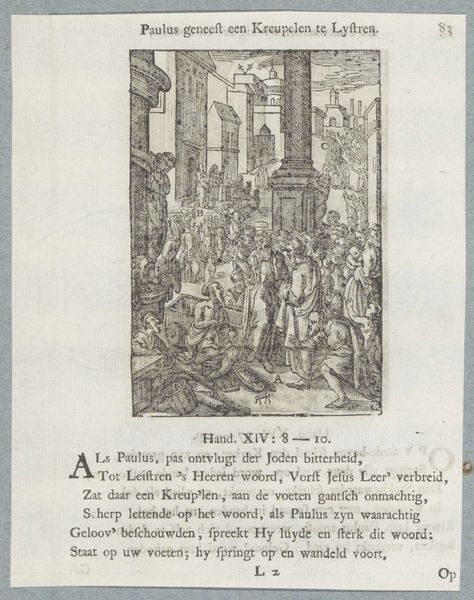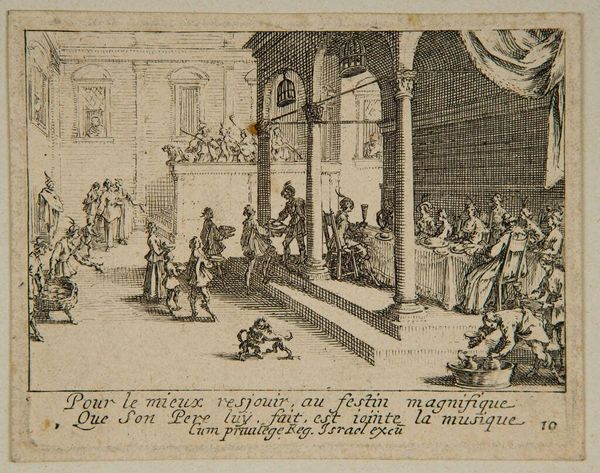
Portret van Hendrik van der Noot op het altaar geplaatst, 1790 1790
0:00
0:00
Dimensions: height 100 mm, width 118 mm
Copyright: Rijks Museum: Open Domain
Cornelis Brouwer created this print, "Portret van Hendrik van der Noot op het altaar geplaatst," in 1790. It depicts a procession inside a church in Brussels, where a portrait of Hendrik van der Noot is being placed on the altar. Van der Noot was a key figure in the Brabant Revolution, an uprising against the rule of Emperor Joseph II. The act of placing his portrait on the altar is highly symbolic, suggesting a near-divine reverence for Van der Noot and his role in the revolution. This image creates meaning through a combination of visual and cultural codes. The church setting, the act of placing a portrait on the altar, and the reverent poses of the figures all create a sense of religious and political significance. The print reflects the revolutionary fervor of the time, but it also offers us a window into the social and political conditions that shaped the revolution, including the role of religion. Historians use such prints, alongside other historical documents, to understand better the complex dynamics of the Brabant Revolution. The meaning of art is always contingent on its social and institutional context, and it's up to us to investigate it.
Comments
No comments
Be the first to comment and join the conversation on the ultimate creative platform.
